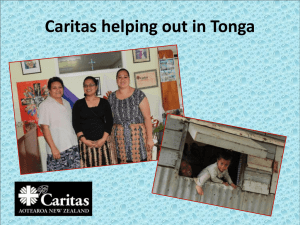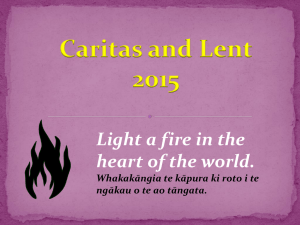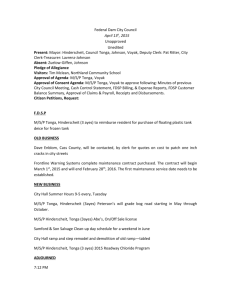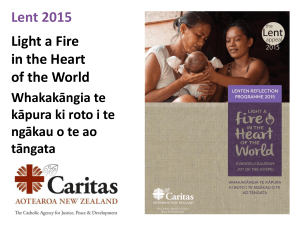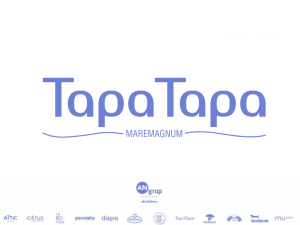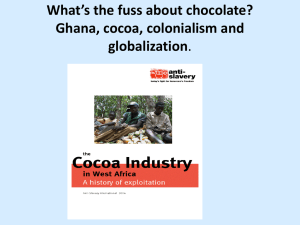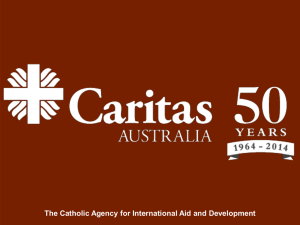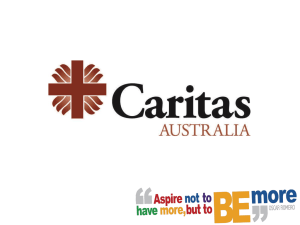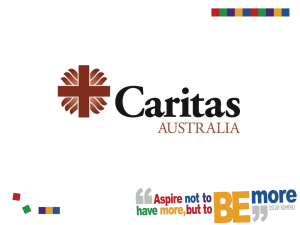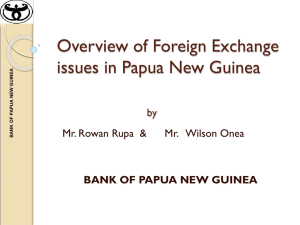Caritas partnerships in
advertisement
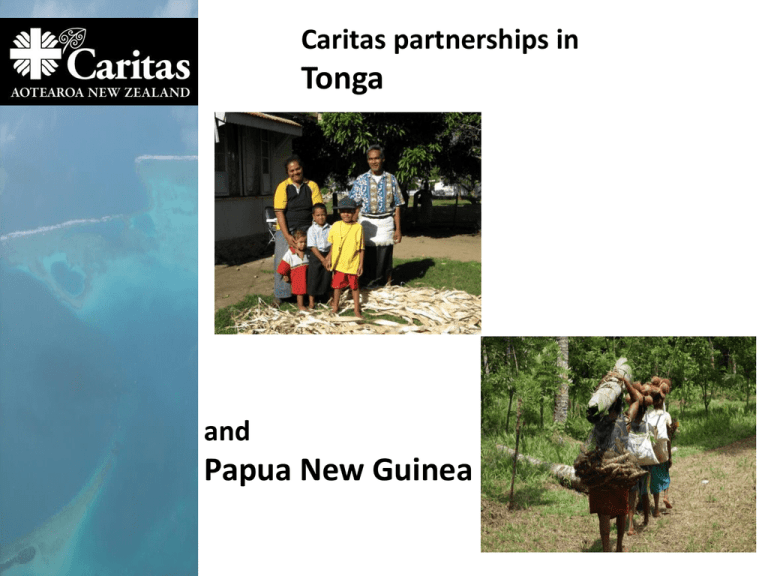
Caritas partnerships in Tonga and Papua New Guinea Caritas in Tonga Caritas Aotearoa New Zealand in partnership with CaritasTonga are running a revolving loan scheme on Tonga’s main island Tongatapu and the second largest island, Vava’u. The NZ Aid programme has allocated NZ$560,260 between 2012-2014. The loans are for tapa making, mat weaving, pig and chicken farming, fishing and growing food crops like yams and peanuts. Where is Tonga? The kingdom of Tonga consists of many small islands spread over the Pacific ocean. The background is an aerial photo of an island from the Ha’apai group of islands, taken while flying towards Vava’u in the Northern group. On the next slide is a map. The biggest island is Tongatapu. If you flew from Aotearoa New Zealand you would land near Tonga’s capital – Nuku’alofa at Fua’amotu airport. Map of Tonga Helping out in Tonga The livelihood project will allow people to supplement their income through micro-enterprise. The groups of 8-15 people must complete workshops in financial management and monitoring to be eligible for the scheme. This picture shows women completing application forms for a loan. Micro enterprise tapa making scheme . Women in Houma work together to glue pieces of tapa together to make one large cloth. Large tapa mats are sold to Tongans living overseas as well as tourists from USA, Australia and New Zealand. They can be worth anything between $1000 and $5000. The income gets divided into thirds – the bank account of the group; individual accounts; Caritas Tonga. . Lisa Vehikite, leader of a tapa group. She says being part of the project has helped her to pay school fees and have extra money to give to her children for lunch at school. Over three years the scheme aims to reach 43 micro-enterprise groups involving 425 households in 21 villages. A total of 1314 women. Tapa making The group can make about four of these large mats a year. First the mulberry plant is beaten flat for many days. Then the group paste the flat pieces together using a ‘glue’ made from cassava. Decorating the tapa Once flattened as a large mat a pattern is painted using vegetable dyes. This is made from the sap of the mangrove tree using a pointed stone or a brush made from the pandanus plant. Ready for sale after many hours of careful hand work. Uses for tapa - ngatu Traditionally tapa was used for many things: Bed sheets, blankets, towels, insect netting, room dividers, bandages, clothing, house decorations, kites, flags. Today it is important for community celebrations like weddings and funerals. Tapa is used for dancing costumes. Caritas encourages people to preserve thier cultural traditions. Other challenges facing Tonga The effects of rapid climate change include: More extreme weather such as cyclones and drought; Rising sea levels; Salination of the soils; Water and food shortages; King tides (exceptionally high tides) Where will the families move to? Caritas Tonga 350 A small but energetic group are working hard to advocate for change. One thing they have done was to plant mangroves around the coastline near Nuku’alofa. What are we doing in New Zealand? Caritas in Papua New Guinea Caritas Aotearoa New Zealand is working in partnership with Caritas Papua New Guinea on a livelihoods programme. Total cost NZ$725,000. It aims to improve the living conditions of approximately 4500 families in ten villages in West New Britain, Manus and Bougainville. The programme will provide support for diversifying crops and fishing. It also reduces disaster risks by improving food security and safe water supply. Where is Papua New Guinea? Papua New Guinea consists of many small islands spread over the Pacific ocean. On the next slide is a map. The biggest island is divided into two different countries. The Caritas partnership featured here is in the part shaded green. If you flew from Aotearoa New Zealand you would land in Papua New Guinea’s capital – Port Moresby. This story is about our partnership in West New Britain. Map of Papua New Guinea. Can you locate the island of New Britain just off the coast from Madang? Helping out in Kimbe In 2008, Caritas Papua New Guinea was alarmed at the harmful impacts of logging, palm oil plantations, mining and natural disasters on local communities. They organised a programme that helped to identify ways to ensure the people of West New Britain and, Manus provinces, and the towns of Vanimo (West Sepik) and Kamusie (Western Province) would be able to live in sustainable ways. In 2010 a pilot income generating project was set up in Kimbe to plant cocoa, coconut seedlings and other food crops. The alternative was to sell their customary lands to big palm oil corporations. The local people chose to grow cocoa themselves rather than sell land for growing palm oil. Growing cocoa The hot chocolate you drink is made from cocoa which comes from the cocoa bean pods. The story of chocolate is a story where many people are involved from the farmer who grows the trees, to the people who transport the beans to the factory, to the factory workers who make the different cocoa products. Each of the people in the chain should get paid a fair price for their efforts. Kapo island The people on Kapo island want to keep their own land. They want to make sure their grand children have land to live on which will support them with food and an income. They have been growing cocoa trees in the nursery but they need more trees for the families. They have told Caritas they need 35,000 seedlings and a boat to take the cocoa beans to the main town 700Km away. Both come at a cost. Why not palm oil? Reduces amount of land for growing food. Uses up soil fertility. Buys up family land. Clearance of forests means loss of biodiversity. Endangers wildlife. WHAT CAN YOU DO TO HELP? Summary Tonga livelihoods project $560,260 from 2012-2014 Next challenge? How to support families affected by the rising sea levels? Papua New Guinea livelihoods project $725,000 from 2012-2014. Next challenge? How to obtain enough money for cocoa seedlings and a boat? To walk faithfully the Way To speak courageously the Truth To live joyfully the Life Partnerships for Change Caritas Aotearoa New Zealand Lent 2013 Thank you to everyone who contributed to this presentation. Photographs by: Emily Benefield, Philip Gibbs, Leo Duce, Tara D’Sousa, Caritas Tonga. www.caritas.org.nz
